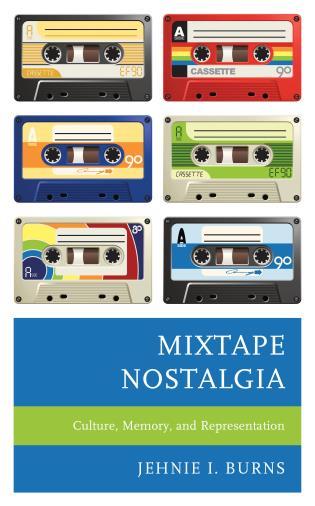Point Park University Professor Jehnie Burns Tracks Mixtape History in New Book Thursday, September 30, 2021

"Everything has a history, and it doesn't have to be all battles, politics, dates and facts. The things you love and find interesting also have a history, and there's a way to connect your personal passions with your academic interests in a way that's valid and serious."
At the end of the 2000 movie "High Fidelity," John Cusack's character resolves to make a mixtape for his girlfriend, "full of stuff she likes."
The custom cassette is a vessel for his feelings, just like the tape that plays Peter Gabriel's "In Your Eyes" as Cusack's character hoists a boombox into the air in 1989's "Say Anything."
"He doesn't know how to use the words, he can't express it, but music does it for him," said Jehnie Burns, Ph.D., associate professor of history. "With mixtapes, you can put all the different emotions in whatever order you want, and that's part of the appeal of them."
The mixtape as a form of expression is one of the concepts Burns explores in her new book, "Mixtape Nostalgia: Culture, Memory, and Representation," a chronological look at the history of the mixtape from when it dethroned vinyl records as the format of choice in the 1970s to its resurgence as an icon of nostalgic analog technology today.
In the Q&A below, Burns shares details about her research and the role music plays in her coursework.
What's something surprising you learned about mixtapes through this project?
Everyone has a mixtape story. When I tell people I study mixtapes, everyone has a story to tell me, whether it's that their boyfriend made them their first mixtape or that they have a box of mixtapes somewhere in their closet or attic. I've had friends send me pictures of mixtapes we made in high school that they still have. When you're listening to interviews with musicians, mixtapes so often pop into the conversation. It's just such a part of the culture. 
How do you incorporate music into your curriculum?
I teach the History of American Music. It starts around the 1880s, and we go all the way up to the 1990s. Throughout the semester, students usually have to go see a live performance and talk about what the performers are doing on stage, what the audience is doing and how they're interacting with the performers. They all read a memoir or biography on a musician. One of the final projects I've done in the past is having students create a mixtape with a theme and justify how the songs fit into their theme.
When I'm teaching women's history, we look at women in blues and we'll play Ethel Waters, Billie Holiday, Ella Fitzgerald and use it to talk about representations of Black women in pop culture, how women are treated based on their backgrounds and ethnicity and how they are seen as public figures. In my 20th century Europe class, we listen to The Velvet Underground and this group from Czechoslovakia called The Plastic People of the Universe. There is a great story about the group listening to The Velvet Underground and The Beatles and using that as a cultural revolutionary touchpoint to create their own band that's underground and anti-Soviet politics in the 1980s.
What do you want students to learn through your history-related pursuits outside of the classroom?
Everything has a history, and it doesn't have to be all battles, politics, dates and facts. The things you love and find interesting also have a history, and there's a way to connect your personal passions with your academic interests in a way that's valid and serious. History can be so heavy, but it can also be fun. On a daily basis, I teach about World War II, the Holocaust and really heavy topics. You need to understand World War II because there's an amazing history of music that comes out of World War II, and if you don't know what's going on during that time, you can't understand the context for why that music happens. But history doesn't always have to be just from a political, diplomatic lens.
What would you put on a mixtape for a history student?
I'll go with women's history since that's what I'm teaching right now. Start with the great women of the blues, like Ethel Waters and Ella Fitzgerald. Move into the 1930s and 1940s with Doris Day singing World War II propaganda songs. Move into the 1950s with Big Mama Thornton singing "Hound Dog," the Andrews Sisters and Carter Family. Then go into the counterculture of Joan Baez and Joni Mitchell. As you go into the 1980s, there's Joan Jett and women showing they can do more than just sing about love and they can also be angry, like Bikini Kill and Bratmobile. Move into Sleater-Kinney and more contemporary artists like Arlo Parks and Brandi Carlile. You also have to have the Spice Girls in there. That leads to Taylor Swift, Ariana Grande and Megan Thee Stallion.

